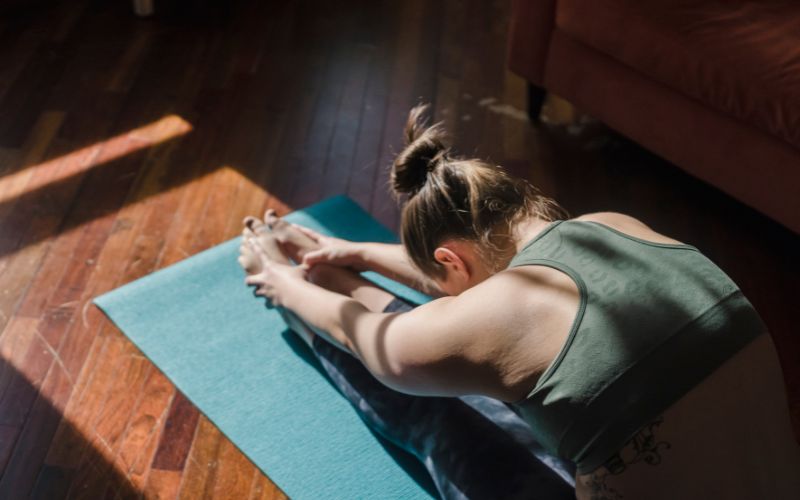Neck and shoulder pain can be a frustrating and debilitating condition that affects millions of people worldwide. Whether it’s caused by poor posture, muscle tension, injuries, or medical conditions, finding effective ways to alleviate the discomfort is crucial for improving your quality of life. In this article, we will explore various strategies and techniques that can help you find relief from neck and shoulder pain.
Understanding the Causes of Neck and Shoulder Pain
Poor Posture and Ergonomics
One of the primary culprits behind neck and shoulder pain is poor posture. Spending long hours hunched over a computer, slouching while sitting, or having improper ergonomics at your workplace can put excessive strain on these areas. It’s essential to maintain good posture and make ergonomic adjustments to prevent and reduce pain.
Muscle Tension and Stress
Stress and tension can cause muscles in the neck and shoulder area to tighten, leading to discomfort and pain. Chronic stress can exacerbate these symptoms, making it crucial to incorporate stress management techniques into your daily routine.
Injuries and Accidents
Injuries, such as whiplash from car accidents or sports-related mishaps, can result in neck and shoulder pain. It’s important to seek medical attention if you have experienced any trauma or accident to rule out any severe injuries and determine the appropriate treatment.
Medical Conditions
Certain medical conditions like arthritis, herniated discs, or degenerative disc disease can contribute to neck and shoulder pain. If you suspect an underlying medical condition, it is advisable to consult with a healthcare professional for an accurate diagnosis and tailored treatment plan.
Lifestyle Changes to Prevent Neck and Shoulder Pain
Improving Posture and Ergonomics
Maintaining good posture and practicing proper ergonomics is crucial for preventing and managing neck and shoulder pain. Ensure that your workspace is set up ergonomically, with a chair and desk at the right height and proper support for your back and neck. Additionally, be mindful of your posture throughout the day, avoiding slouching or forward head position.
Regular Exercise and Stretching
Engaging in regular exercise and stretching can help strengthen the muscles in your neck and shoulders, promoting flexibility and reducing the likelihood of pain. Focus on exercises that target these areas, such as neck rolls, shoulder shrugs, and gentle neck stretches. Consult with a fitness professional or physical therapist for guidance on suitable exercises for your condition.
Stress Management Techniques
Since stress can exacerbate neck and shoulder pain, it’s important to incorporate stress management techniques into your daily routine. Practice relaxation techniques like deep breathing, meditation, or yoga to help alleviate stress and reduce muscle tension in these areas. Additionally, finding healthy outlets for stress, such as engaging in hobbies or spending time with loved ones, can have a positive impact on your overall well-being.
Adequate Rest and Sleep
Getting sufficient rest and quality sleep is vital for allowing your body to heal and recover. Make sure you have a comfortable pillow and mattress that provide adequate support to your neck and shoulders. If you often wake up with neck and shoulder pain from sleeping in the wrong position, consider using a supportive neck pillow or adjusting your sleeping posture.
Effective Home Remedies for Neck and Shoulder Pain
Heat and Cold Therapy
Applying heat or cold to the affected area can help relieve pain and reduce inflammation. Use a heating pad, warm towel, or hot water bottle to apply heat to the neck and shoulders for 15-20 minutes. Alternatively, you can use an ice pack or a bag of frozen vegetables wrapped in a cloth for cold therapy. Experiment with both methods to determine which provides the most relief for your specific condition.
Gentle Exercises and Stretches
In addition to regular exercise, incorporating gentle exercises and stretches specific to the neck and shoulder area can help alleviate pain. Consult with a physical therapist or search for guided exercises online that target these areas. Be sure to perform the exercises correctly and avoid any movements that exacerbate your pain.
Massage and Self-Massage Techniques
Massage therapy can be highly effective in relieving neck and shoulder pain. Consider scheduling a professional massage or using a handheld massager, such as the Nekteck massager, to target the affected muscles. You can also learn self-massage techniques or ask a partner or friend to assist you in applying gentle pressure and kneading to the painful areas.
Topical Pain Relief Options
Over-the-counter topical pain relief options, such as creams, gels, or patches, can provide temporary relief from neck and shoulder pain. Look for products that contain ingredients like menthol or capsaicin, which can help soothe the muscles and reduce discomfort. Follow the instructions provided and avoid applying these products to broken or irritated skin.
Seeking Professional Help for Neck and Shoulder Pain
If your neck and shoulder pain persist or worsen despite trying various home remedies, it may be necessary to seek professional help. A healthcare professional, such as a chiropractor, physical therapist, or orthopedic specialist, can evaluate your condition, provide a proper diagnosis, and recommend targeted treatments or therapies tailored to your needs. It’s essential to follow their guidance and attend any recommended sessions or appointments for optimal results.
FAQ
While the fastest way to relieve neck and shoulder pain can vary depending on the individual, applying heat or cold therapy, gentle stretching, and using topical pain relief options can provide quick relief.
To relieve neck and shoulder pain from sleeping in the wrong position, consider using a supportive neck pillow, adjusting your sleeping posture, and practicing gentle exercises and stretches targeted at these areas.
Yes, stress can contribute to muscle tension in the neck and shoulder area, leading to pain and discomfort. Incorporating stress management techniques and relaxation practices can help alleviate these symptoms.
If your neck and shoulder pain persist or worsen despite trying home remedies, it is advisable to consult with a healthcare professional who can provide a proper diagnosis and recommend targeted treatments or therapies.
The Nekteck massager is a handheld device that can be used to target and massage the muscles in the neck and shoulder area. It can help relieve tension, reduce pain, and promote relaxation in these regions.









